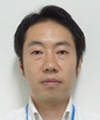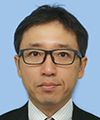 |
|||||||||||||||||
|
|
|||||||||||||||||
|
Feature Articles: Cognitive Foundation® for Innovative Optical and Wireless Network (IOWN) Vol. 18, No. 6, pp. 11–16, June 2020. https://doi.org/10.53829/ntr202006fa1 Approach to Cognitive Foundation® for the Innovative Optical and Wireless Network (IOWN)AbstractThere is an urgent demand for information and communication technology (ICT) to meet the needs of industrial and social systems. These systems include the management of rapidly increasing devices and diverse digital services. In this article, we introduce NTT Group’s approach to fully automated, autonomous, and self-evolving life-cycle management of ICT resources, including the deployment and optimization of such resources, to provide applications and solutions. Keywords: Cognitive Foundation, Multi Orchestrator, IOWN 1. IntroductionIn the era of fifth-generation mobile communication systems (5G) and the Internet of Things (IoT), almost any device can be connected to the Internet. This means that not only will it soon be possible to efficiently collect and store large volumes of digital data, but through artificial intelligence (AI), advanced analysis and prediction contributing to work efficiency and productivity will also become possible. There are high expectations for digital transformation (DX) to resolve social issues such as the reduction in birth rates, aging society, shrinking working population, and increase in natural disasters. The NTT Group is promoting the business-to-business-to-X (B2B2X) model, which will create new value for end users by supporting service providers (second B in B2B2X) in a variety of fields to meet the demands of those users. In these Feature Articles, we introduce the concepts promoted by the NTT Group, the technology that enables these concepts, and the current approaches to achieve these concepts. 2. Cognitive Foundation®Cognitive Foundation® (CF) is a concept for integrally optimizing deployment and configuration—such as building, configuration, management, and operation—of information and communication technology (ICT) resources*1 to provide applications and solutions. ICT resources include not only cloud and network services, such as platform as a service (PaaS), infrastructure as a service (IaaS), and software-defined network (SDN), but also ICT resources owned by the second B. In the past, ICT resources have been siloed by each application and solution, requiring separate life-cycle management for optimizing deployment and configuration of such resources. Recently, use cases requiring advanced distributed collaboration in edge computing and hybrid cloud have increased. ICT resource life-cycle management tends to be continuous and complex and is a huge burden for the second B, which provide social systems, to focus on developing and providing applications and solutions. CF enables the second B to focus on their core businesses by rapidly optimizing deployment and configuration of ICT resources in a multi-domain*2, multi-layer*3, and multi-service/vendor environment. It will also make such optimization fully automated, autonomous, and self-evolving in the future (Fig. 1).
3. Multi OrchestratorCF is composed of two elements. The first is ICT resources, as described in the previous section. The second is the Multi Orchestrator (MO), the key technology of CF. The MO, requested by the second B, provides integrated optimized deployment and configuration of a wide variety of ICT resources, thus achieving CF. The MO is composed of the following three function groups that can communicate via an application programming interface (API). (1) Orchestration function group: An adaptor group that can convert commands that are suitable for the workflow engine and for each ICT resource. (2) Management function group: A group that includes configuration and design information based on the standard model. (3) Intelligent function group: An AI group that continually optimizes ICT resources, from design, configuration, and testing to operation, independently. According to our research, there are currently no comparable products that incorporate all three function groups. Regarding groups (2) and (3), in-house development is progressing together with applications for technical patents as a source of competitiveness to differentiate from other companies’ products. Basic development of the three function groups will be completed in FY 2019. NTT Communications will continue to enhance and advance the functionality of the MO to make CF concept a reality. There are currently smart city initiatives in Las Vegas City, USA, to represent CF. There are several other proofs of concept (PoCs) going on in parallel. We will continue to work on initiatives to create a smart world such as smart factories, smart healthcare, and smart sports. 4. IOWNCF is also an important initiative in terms of the innovative optical and wireless network (IOWN). IOWN is an initiative for future communications infrastructure introduced by the NTT Group in 2019. IOWN is aimed at resolving technical issues to facilitate sustainable growth. One such issue is the stagnation in the evolution of semiconductors. Another issue involves the increase in power consumption due to the vast volume of data processed with IoT, big data, and AI. The NTT Group is addressing these issues through research initiatives, changing from existing signal processing using electronics technologies to processing using photonics-electronics convergence technologies with which optical technology is incorporated on-chip. In April 2019, NTT announced the development of a highly efficient optical transistor [1]. This transistor consumes the least amount of energy during operation when compared to any other type of transistor. Additionally, Intel, Sony, and NTT have established the IOWN Global Forum [2] in the United States. This forum is an international initiative to promote photonics-related research and development (R&D), specifically, technologies that use photonics-electronics convergence. Optical semiconductors using photonics-electronics convergence technologies are the basis of IOWN and are expanding the capabilities of applications that support terminals, devices, and networks. IOWN consists of three elements: 1) The All-Photonics Network, in which photonics technology is deployed in all areas, from the network to terminals; 2) Digital Twin Computing, which enables future predictions by combining information gathered from the real world and digital world; and 3) CF, in which all things/devices are connected and controlled. CF, as previously described, is a framework for the centralized execution of the construction, configuration, and operation/management of ICT resources, which includes user resources. With CF, it is possible to optimize the rapid allocation of ICT resources and ICT resource allocation in a multi-domain, multi-layer, and multi-service/vendor environment. Toward the realization of IOWN, we are evolving CF into a platform on which further automated, autonomous, and self-evolving network management and AI platform and data management are possible. In terms of the former, we are engaged in R&D to evolve from the level of predictive maintenance of a single system for abnormality detection based on deep learning toward an optimized wireless connection through multi-wireless control technology, automated operation of wireless systems, and self-evolving operation of systems. In terms of the latter, there are initiatives with regard to AI platforms to support the estimation, prediction, and optimization of vast quantities of data in real time. These initiatives also support low latency and safe distribution of sporadic data. CF must also combine a variety of resources safely, so we are researching and developing security technology to support that. 5. Public safety solution initiative in the City of Las Vegas, United StatesBased on the B2B2X model, the NTT Group is working to create a smart world that includes smart cities, factories, healthcare, and sports. We now introduce the smart city (public safety solution) initiative implemented as CF in Las Vegas. 5.1 Social issues required for public safety solutionWith the recent increase in the number of situations associated with crime and disasters in urban areas, it has become increasingly important for local government, police, fire departments, and other relevant authorities to understand the crowd movements, traffic status, and emergencies occurring in downtown districts of urban areas and event venues where people gather and protect the safety of citizens. To achieve a shorter initial response time from the relevant authorities, in addition to rapidly grasping the current status through the allocation of multiple sensors, there is a necessity to establish a public safety solution to assist with predicting and analyzing incidents with a high occurrence rate in advance. 5.2 Public safety solution in the City of Las VegasConcerning such social issues, starting from September 2018, the NTT Group along with the Dell Technologies Group deployed high-definition video cameras, acoustic sensors, and IoT devices in the Innovation District in the downtown district of Las Vegas and collected and analyzed the information for relevant authorities of Las Vegas to recognize situations on the field. To create economic opportunities, verification of a data-management platform for traffic management is being conducted jointly with Las Vegas. The three main points related to these joint smart city PoCs (Figs. 2, 3) are outlined below:
(1) CF: Enable rapid and optimized deployment and configuration of ICT resources in a multi-domain environment. We distributed the analysis environment in a micro datacenter (Edge) near the sensor and in the customer datacenter (Core). We promptly and remotely created and deployed ICT resource configuration in which only the results obtained through the analysis in the Edge and the data required for further analyses are transferred to the Core. (2) Proactive reports (trend analysis): Predict the seriousness of a situation and its potential as an even more serious incident. We collected the data obtained from different types of sensors, comprehensively used information such as movement and volume of crowds, traffic conditions, and sounds associated with incidents with high occurrence rates, such as gunfire and screams, in the vicinity, as well as climate data and social-networking-service (SNS) information, to carry out advanced trend analysis through the “corevo®” AI technology developed by the NTT Group. (3) Reactive reports (edge detection): Enable prompt recognition and reporting of the relevant information to the authorities after an incident occurs. Specifically, we used the aforementioned AI technology in the Edge near the sensors to constantly monitor crowd movements and volume, as well as movements of dangerous vehicles, to identify known criminals and stolen vehicles through facial recognition and image analysis and analyze the surrounding situation, including sounds associated with incidents with high occurrence rates by detecting these sounds in the Edge. As a result of these PoCs, by monitoring and analyzing roads, such as one-way roads where reverse driving frequently occurred, the reasons of such behavior were elucidated such as road signs being difficult to view or the paint on a road beginning to disappear. In Las Vegas, a wide variety of preventative measures have been undertaken based on the results of such analysis. 5.3 Future developmentsIn December 2018, based on the results of these PoCs, NTT, the State of Nevada, and City of Las Vegas agreed to advance and accelerate the smart city solution. In February 2019, the NTT Group (NTT, NTT DATA, Dimension Data, NTT Communications, NTT Comware, and NTT Security) started a commercial provision of the smart city solution in Las Vegas, and the solution has been further expanded by using The International Innovation Center @ Vegas (IIC@V) [3], which is located in the downtown area. The NTT Group is also cooperating with the city to expand the functions of the solution and provide it to other cities. Moving forward, we plan to collaborate further with our partners to globally distribute smart world solutions based on CF to achieve promote the smart world in other states and cities in the United States, as well as the Asia-Pacific and EMEA (Europe, the Middle East, and Africa) regions. 6. “Cradio” for Optimizing Wireless AccessCF is also closely related to wireless access, which corresponds to the “W” in IOWN. Various access systems are currently used. The situation will become even more complex by using not only 4G/LTE (Long Term Evolution), but also using satellite communications, Wi-Fi, WiMAX, low power wide area (LPWA) for IoT, 5G, and local 5G. We are engaged in R&D on Cradio technology, which is intended to optimize wireless access in a variety of usage scenarios without regard to the type of wireless communication method or particular network service. This can be done based not only on location but also on quality and congestion predictions. For example, if a person urgently needs to send information to another person in an area with low Wi-Fi throughput, Cradio selects the optimal wireless access with regard to the network side and controls the connection. With CF, we plan to incorporate a wireless technology that can be used to establish wireless access according to the location, application, and environment without the necessity to consider a system or business operator. For further details, refer to the article “Quality-prediction Technology for Optimal Use of Multiple Wireless Access Networks” in this issue [4]. 7. Evolution into a self-evolving operationThe considerable damage caused by typhoons in 2019 that hit Japan resulted in extensive damage to telecommunication services. To provide a reliable telecommunication infrastructure, the NTT Group has been engaged in R&D focused on developing a technology for predicting damage by using AI on the basis of the logs issued by devices and taking appropriate preventative measures. The information that cannot be perceived simply by monitoring network devices, including meteorological information, such as ferocity of a typhoon and its path and event hosting information, can also be incorporated into CF to enhance preventive measures. For example, we plan to develop a system that is able to analyze and optimize the current situation based on the newly collected information, so that preventative measures can be defined and executed before the damage occurs. As a result of evolving the system used for future predictions, self-evolving operation can be incorporated into CF. The details are provided in the article “Intelligent Zero-touch Operations” in this issue [5]. References
|
|||||||||||||||||

















